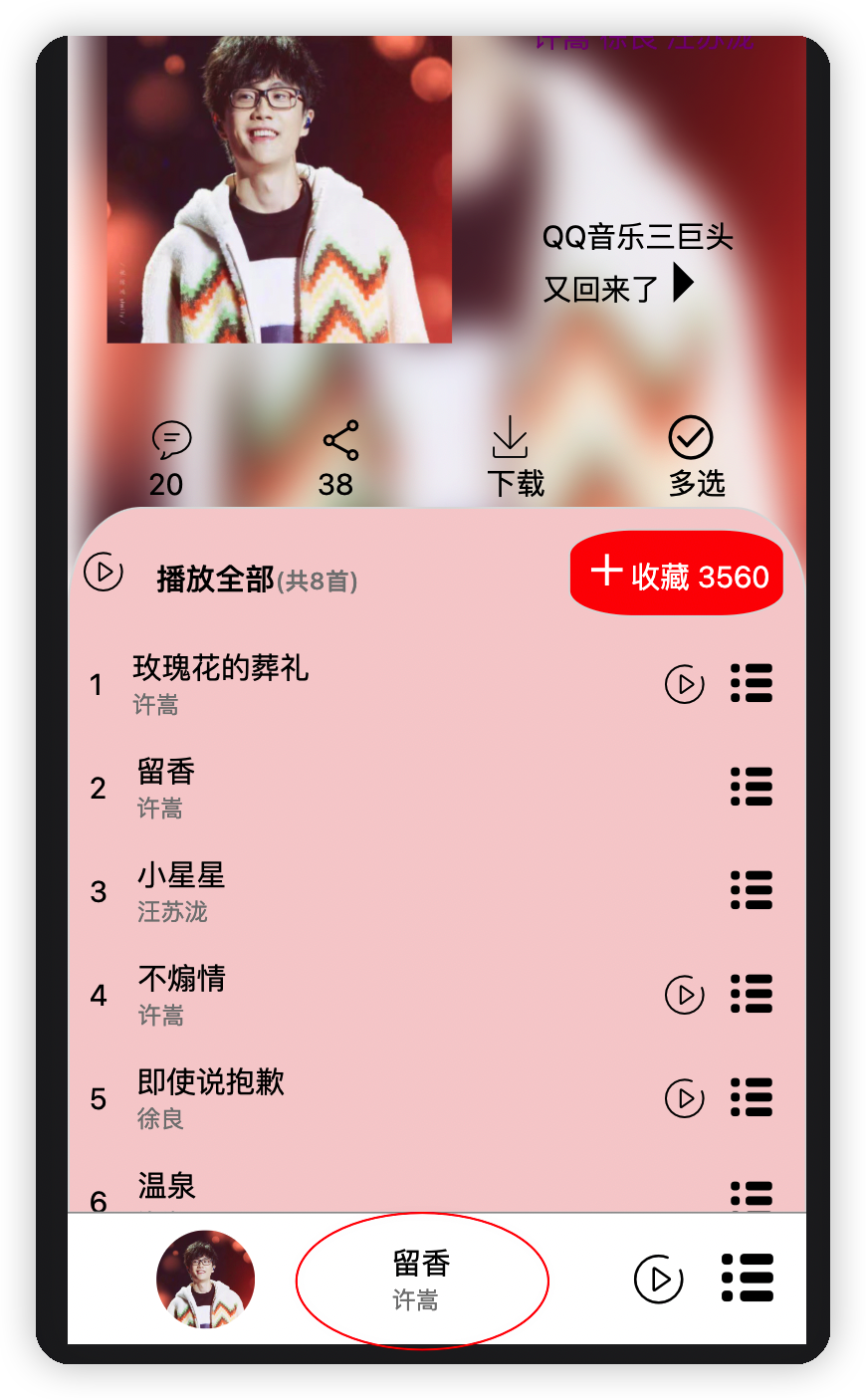

(前端)「中介者」设计模式在项目开发中的应用 - 红果园园长
source link: https://www.cnblogs.com/lingda-blogs/p/16554002.html
Go to the source link to view the article. You can view the picture content, updated content and better typesetting reading experience. If the link is broken, please click the button below to view the snapshot at that time.

(前端)「中介者」设计模式在项目开发中的应用
1. 事件起因
事情是这样的,我之前在做一个仿网易云的项目,想实现一个功能,就是点击歌曲列表组件(MusicList)中每一个item时,底部播放栏(FooterMusic)就能够获取我所点击的这首歌曲的所有信息(如图1到图2),但是底部播放栏是直接放在外壳组件App.vue中固定定位的,歌曲列表组件是作为页面级组件HomeView.vue的子组件,因此他们二者至多只能算是兄弟组件(可能还差了一个辈分?),这就涉及到了兄弟组件之间的通信问题。


Vue2中实现兄弟组件的通信一般是安装EventBus插件,或者实例化一个Vue,它上面有关于事件的发布和订阅方法,Vue3的话好像是使用mitt插件吧,但我不想用mitt,也不想装插件,因此决定手写一个EventBus。
2. 解决方案
利用「中介者」设计模式。
实现思路: 手写一个EventBus,让其作为中介者进行事件的发布与订阅(或取消订阅),在组件中调用EventBus实例进行事件的发布或订阅即可。
代码如下:
src/EventBus/index.ts:
class EventBus { static instance: object; eventQueue: any constructor() { this.eventQueue = {} } // 用单例模式设计一下,使全局只能有一个EventBus实例,这样调度中心eventQueue就唯一了,所有事件与其对应的订阅者都在里面 static getInstance() { if(!EventBus.instance) { Object.defineProperty(EventBus, 'instance', { value: new EventBus() }); } return EventBus.instance; } // 事件发布 $emit(type: string, ...args: any[]) { if(this.eventQueue.hasOwnProperty(type)) { // 如果调度中心中已包含此事件, 则直接将其所有的订阅者函数触发 this.eventQueue[type].forEach((fn: Function) => { fn.apply(this, args); }); } } // 事件订阅 $on(type: string, fn: Function) { if(!this.eventQueue.hasOwnProperty(type)) { this.eventQueue[type] = []; } if(this.eventQueue[type].indexOf(fn) !== -1) { // 说明该订阅者已经订阅过了 return; } this.eventQueue[type].push(fn); } // 取消事件订阅, 将相应的回调函数fn所在的位置置为null即可 $off(type: string, fn: Function) { if(this.eventQueue.hasOwnProperty(type)) { this.eventQueue[type].forEach((item: Function, index: number) => { if(item == fn) { this.eventQueue[type][index] = null; } }); } }} // 最后导出单例的时候记得给单例断言成any哈, 要不然在组件内调用eventBus.$on('xxx', () => {...})会报错对象上没有$on这个方法export default EventBus.getInstance() as any;
写好了中介者之后,我们在组件中使用一下
在歌曲列表组件中点击事件后触发
在底部播放栏组件中订阅这个事件
eventBus.$on('CUR_SONG', (curSongMsg: IMusic) => { console.log('订阅事件: CUR_SONG'); console.log('curSongMsg: ', curSongMsg); // reactive定义的引用类型必须逐个属性进行赋值才能实现页面的响应式更新 songMsg.name = curSongMsg.name; songMsg.author = curSongMsg.author; songMsg.mv = curSongMsg.mv;});
以上就完成了利用中介者EventBus进行事件的发布与订阅,实现无关组件之间的通信问题。
参考书籍 《JavaScript设计模式》 张容铭 著
Recommend
About Joyk
Aggregate valuable and interesting links.
Joyk means Joy of geeK